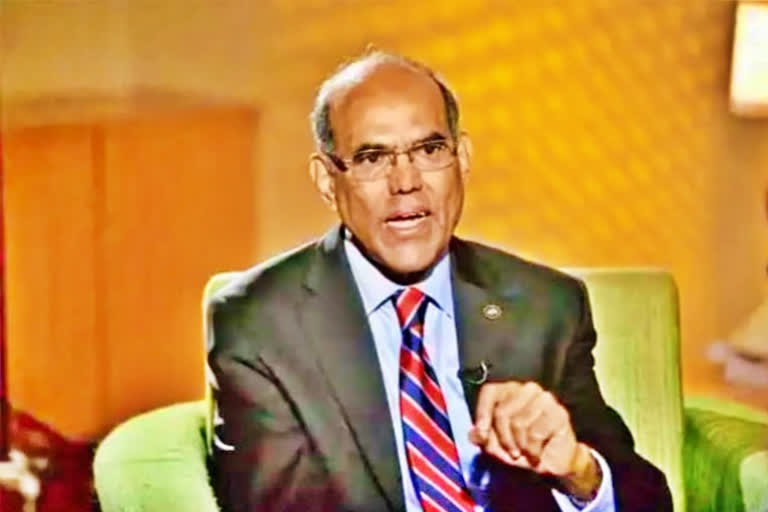Hyderabad:Since the onset of the pandemic, several states in India have their debts hovering around 40 per cent or more of the respective gross state domestic products (GSDPs). Populist schemes and limitless borrowing even for day-to-day expenses are majorly impacting the country's financial discipline and spending ability.
With an upward turn in the trajectory of interest rates and record borrowings by both union and state governments, the interest cost of the government is set to see a spike in the current financial year. In an interview with Eenadu, Duvvuri Subbarao, noted economist, Central Banker and former Governor of RBI spoke in detail about the issue. According to him, to understand the extent of debt hovering over Indian states, it was necessary to add up the additional debts undisclosed in the budget, debt guaranteed to corporations unaccounted for in ledgers and contingent liabilities.
"The crisis is imminent. Centre needs to intervene in the debt situation to prevent a financial emergency," said Subbarao as he discussed the impending debt crisis. "States can borrow for investment spending. However, it is worrisome that they are borrowing for day-to-day expenses, salaries, subsidies and even welfare schemes. If the situation continues, we may go the same way as Sri Lanka," he warned.
Though the Centre has enacted the Fiscal Responsibility and Budget Management (FRBM) Act to reduce the fiscal deficit, the states have been borrowing off-budget. The government of India, he said, should intervene in this matter and suggest measures to reduce debt. It should consider imposing conditions, and should not hesitate to impose financial emergency on the states which are still acting irresponsibly, he added.
The problem is limitless borrowing
Asked why were states incurring excess debt instead of focusing on optimizing or creating their own sources of income, the former RBI Governor said that while debts may be required as a part of financial management, the real problem was limitless borrowing. "If the government spends the debt to invest on something, it will generate income. They can repay the debt. But if taxes are slashed, and loans are spent for subsidies and populist schemes, we may find ourselves in a severe economic crisis like Sri Lanka. Few states in our country are going this way. According to the latest report by the RBI, Andhra Pradesh is among the top five states with the highest debt," he said.
Should we be worried?
Corporate bonds must also be calculated. There are states whose debt to GSDP is 50 per cent or more, passing over the borrowing limit. Asked why isn’t the RBI interfering, Subbarao said that he cannot comment on any state in particular. "The RBI report is for all the states. As per the report, states’ debts and consequently, interest rates are rising. There is no money for development works. You are right about off-budget debts though. We usually look at any report based on the numbers presented in the budget. Financial management and payments are appearing trouble-free. But we have no idea what’s going on behind the scenes. Borrowings from corporations with guarantees should also be included in the budget," he said.
A lesson in Sri Lanka
Drawing parallels, Subbarao said the two major causes of the Sri Lankan financial crisis were decreasing foreign reserves and the government’s populist schemes. Sri Lanka, he said, was largely dependent on remittances sent by their citizens working abroad and income from tourism. However, the 2019 Easter bombings and Covid-19 terribly impacted the country’s economy. Tea and textile exports came to a grinding halt during the pandemic.
